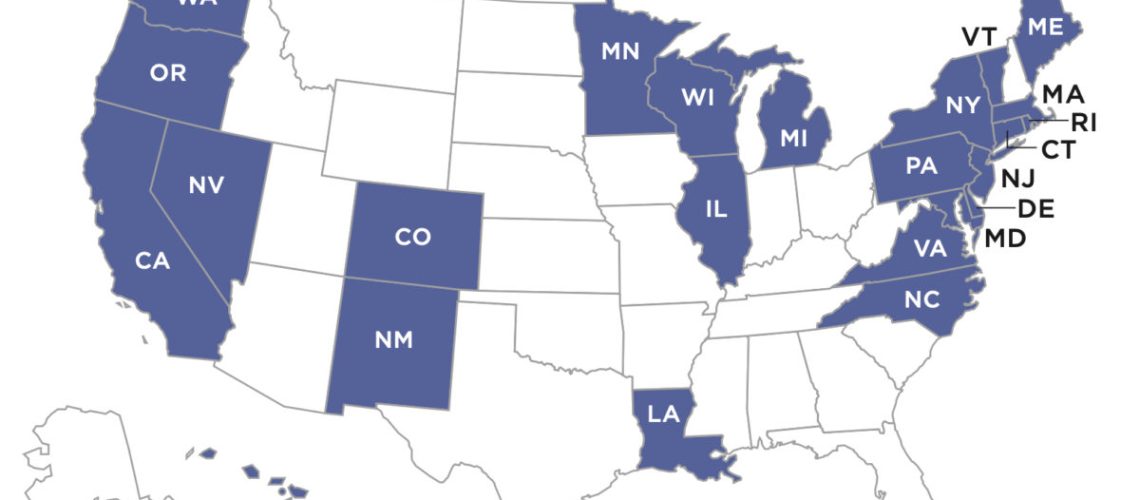For 24 states whose governors support climate action, reaching 100% renewable electricity by 2035 would cost less than a “no new policy” scenario, the Union of Concerned Scientists found.
If the 24 states in the US Climate Alliance all set a mandate for 100% renewable electricity by 2035, they could meet that standard and achieve lower electricity prices than under a “no new policy” scenario, found the advocacy group Union of Concerned Scientists (UCS).
UCS reached that result by modeling the US grid using the Regional Energy Deployment System (ReEDs) model, developed by the National Renewable Energy Laboratory (NREL) and now available for free. ReEDS is NREL’s flagship capacity planning model for the North American electricity system, and it simulates the evolution of the bulk power system—both generation and transmission—from present day through 2050.
UCS may be the first advocacy group to use the ReEDS model, given that when NREL was asked about other recent uses of the model, they provided three examples that were led by university-based researchers at UC Berkeley, Harvard, and ETH Zurich.
The UCS study “looked at the potential of action by self-identified leadership states—members of the US Climate Alliance,” said Paula García, UCS senior bilingual energy analyst. The Alliance is a bipartisan coalition of governors committed to reducing greenhouse gas emissions consistent with the goals of the Paris Agreement, according to its website.
UCS modeled meeting 100% of electricity consumption with renewable energy by 2035 in the 24 states, while electricity demand increased 56% through 2040 due to electrification of heating and transportation. Costs for doing so in the 24 states were 0.1% lower over 20 years, relative to the “no new policy” scenario, said García.
Renewable electricity standards focus on consumption of renewable electricity, not generation, García said, and the UCS modeling showed many gas generating units in the 24 states operating through 2040. Out of concern for “communities that have borne the brunt of pollution,” she said, the UCS report recommends policies to ensure environmental justice and to “expand equity in access to rooftop solar, energy efficiency, and electrification.”
Modeling skills
To use the ReEDS model, UCS modeling staff licenses the GAMS modeling software that ReEDS requires, along with a CPLEX linear programming solver from GAMS. Running the model also requires the languages Python and R, said Sandra Sattler, UCS lead energy modeler. UCS used a computer with a 16 bit operating system and 16 GB of RAM.
NREL “is good about answering questions about particular aspects of our analyses,” said Sattler. “Also, now that the model is publicly available, there is a good amount of documentation and a robust online users community.”
The UCS analysis used the low renewable cost projection from NREL’s 2020 Annual Technology Baseline for renewable cost and performance assumptions. For the extent of electrification, UCS used the high electrification scenario from a 2018 NREL study, which incorporates load flexibility.
The ReEDS model ensures that demand is met in all seasons at all times, “using a reduced-order dispatch in 17 time-slices within each model year,” says NREL’s documentation. The model also ensures resource adequacy.
The UCS report, titled “On the road to 100 Percent Renewables,” also projected health and jobs benefits from higher renewables. Three local environmental groups partnered in the study: COPAL in Minnesota, GreenRoots in Massachusetts, and the Michigan Environmental Justice Coalition. UCS also published breakout analyses for Massachusetts, Michigan and Minnesota, and a technical appendix.



